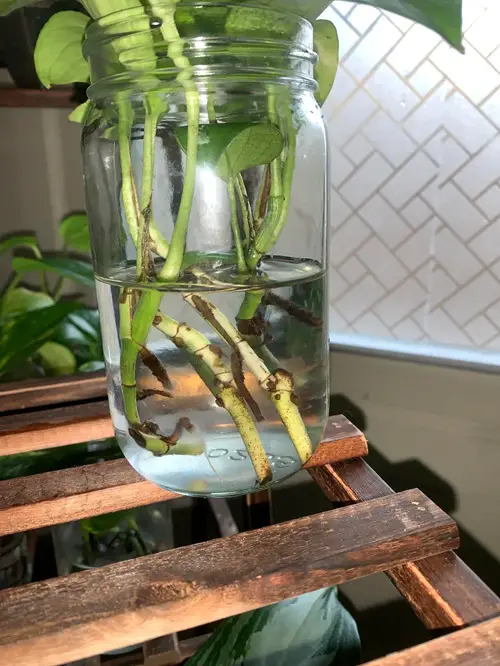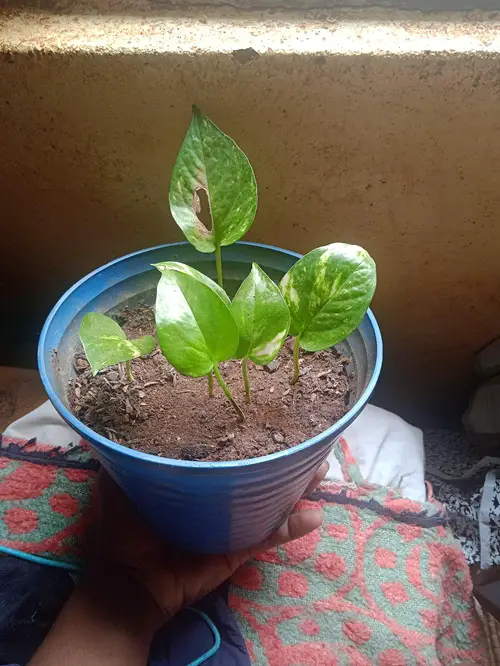Eager to grow your very own Pothos plant, but the cuttings just aren’t rooting? Let’s figure out why—and how you can fix it!
Pothos is a tropical perennial vine known for its beautiful, cascading stems adorned with broad, colorful leaves. It’s popular worldwide not only for its looks but also because it’s usually quite easy to propagate from stem cuttings.
However, things don’t always go as planned. If you’re trying to use this method but don’t see any roots forming, this article is for you!
Why Are There No Roots on Your Pothos Cuttings – Reasons and Fixes
Note: This article focuses on the water propagation method, as it is easier to monitor and manipulate than direct soil propagation for rooting.
1. Wrong Cutting Method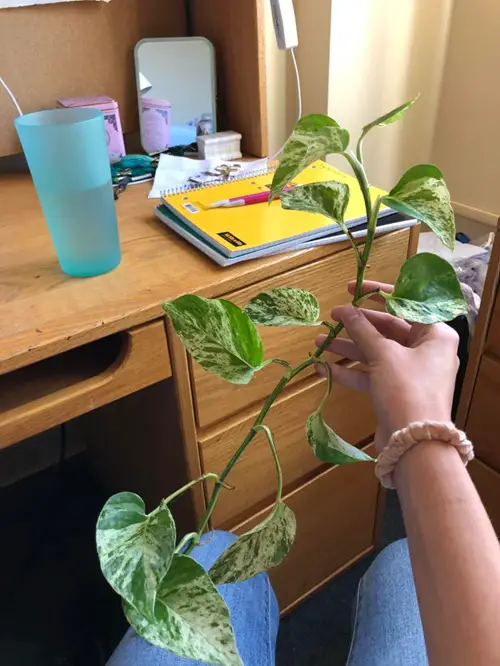
Snipping off any portion of a pothos vine will NOT grow into a new plant. A new plant emerges only from the right cutting, and successful cuttings always include at least one node, which is where new roots grow. Now, what are those?
Do you notice that each pothos cutting has bump-like formations on it? They’re called nodes. Roots develop from these, and without one, your cutting can’t grow roots at all.
Ideally, you should take cuttings about 4-6 inches long, with at least 2-4 leaves and a couple of nodes. Also, remove the leaves from the lower part of the cutting before placing it in water. This prevents leaves from sitting underwater and rotting.
Note: Always use sterilized scissors or shears when snipping cuttings from the mother plant to reduce the risk of infection.
2. Faulty Mother Plant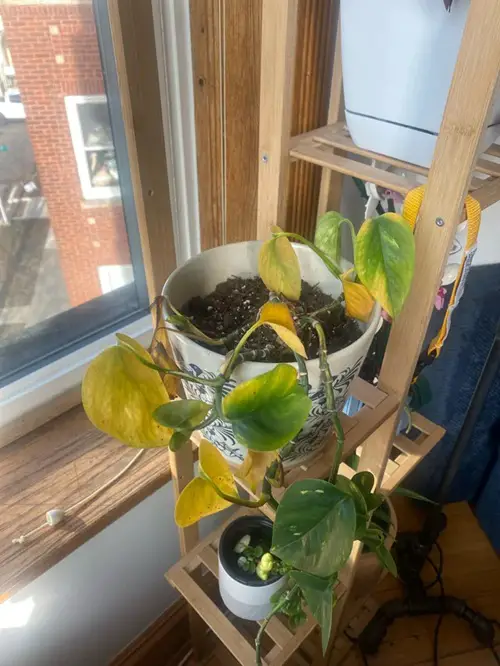
Did you know plants grown from cuttings are exact copies of the mother plant? So if the mother plant is diseased or dying, a cutting taken from it may not root at all. Check for signs of wilting, yellowing, spots on leaves, or visible pests before cutting.
Even if your cuttings root, there’s a high chance they’ll carry infections from a sick mother plant. So, the simple rule is: healthy mother plant = healthy cutting = healthy new plant!
3. Hard or Contaminated Water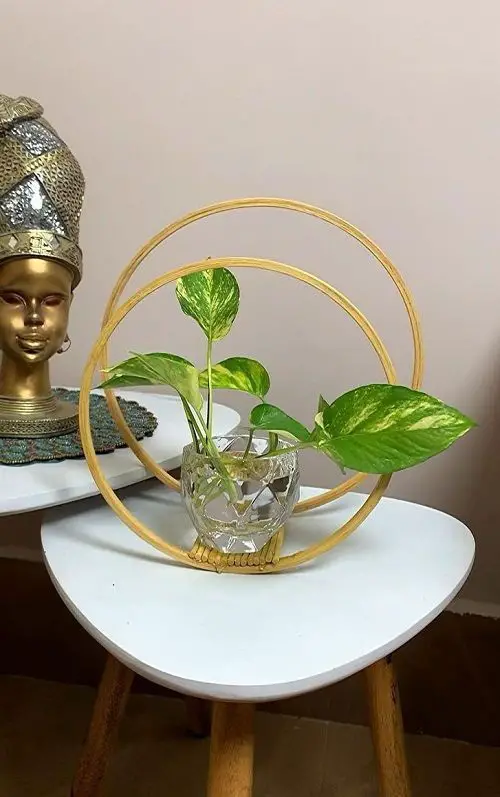
Pothos stem cuttings are quite sensitive to their environment, especially the water used for the rooting process. Hard or contaminated water, with high concentrations of chlorides and fluorides, is chemically harsh for the fragile cutting and will hamper root formation.
The best way to tackle this is to use distilled or RO drinking water. If that’s not possible, let tap water sit out uncovered for at least 24 hours. This helps the salts settle at the bottom and makes the water safer for plants.
Pro tip: If you suspect hard water is the problem, try bottled drinking water or rainwater instead.
4. Drowning the Cuttings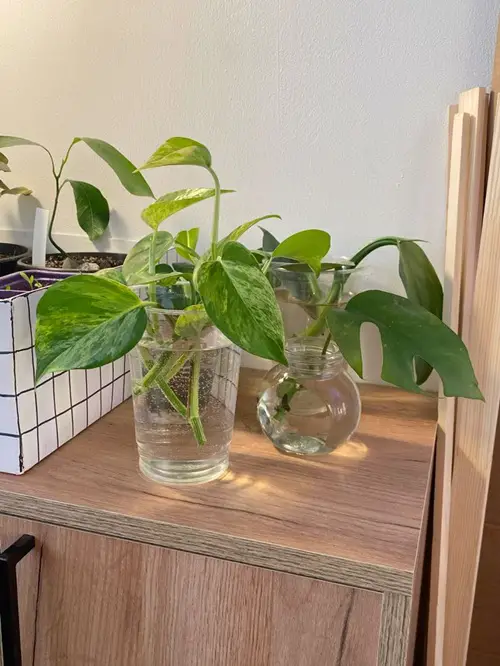
Linked to the last point, what happens if you use the right type of water but in the wrong quantity? Your cuttings do not root! Even cuttings need oxygen to survive! If you submerge them too deep into the water, they’ll drown and die, let alone form roots.
Only the nodes (the bumps on the stem) should be underwater, not the leaves or the entire cutting. You may need to use tape, clips, or a support grid to hold your cuttings upright.
Note: The water temperature also plays a significant role in rooting. Using cold water will shock the forming roots and prevent them from growing. Instead, use water at room temperature or lukewarm water.
5. Anaerobic Bacteria in Stagnant Water
Unchanged stagnant water is a silent killer that prevents your pothos cutting from forming roots! When water is kept sitting for long periods of time, anaerobic bacteria begin to develop within it. These microbes feed on organic matter and produce toxic byproducts that will eventually kill the plant!
A simple fix is to change the water regularly. Try doing so every 3-4 days, or sooner if the water turns cloudy or smells bad.
Note: Use transparent glass or plastic containers to observe root development or determine the cloudiness of water easily. Also, give your container a quick rinse with mild soap before refilling it to reduce bacteria buildup.
6. Overcrowding while Rooting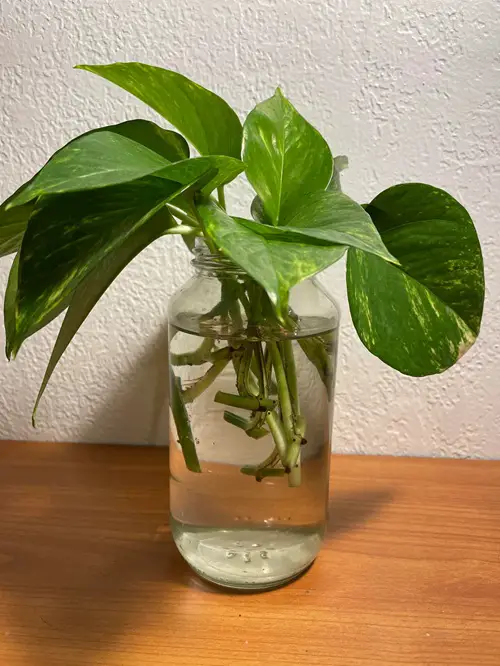
When it comes to pothos propagation, less is more! If you stuff multiple pothos cuttings in a single dish or jar in the hopes that they’ll all simultaneously produce roots, you are mistaken!
Overcrowding reduces the amount of oxygen in the water, effectively killing most or all of them. Too many cuttings lower oxygen levels in the water and increase the risk of rot.
So, remember to match the number of pothos cuttings proportionately to the size of the container. A large vase can take 4-6, while a small bowl will propagate 2-3 at a time. Leave some space between cuttings to ensure each one receives enough light and airflow.
7. Lack of Sunlight 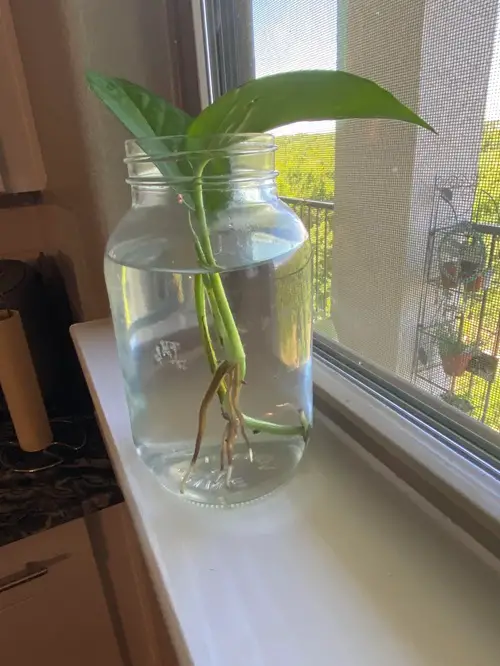
We all know that sunlight is necessary for mature plants, but did you know it is equally essential for cuttings? The leaves on the cutting convert light into energy through photosynthesis, which is required to produce the roots.
If you keep your cuttings in a dark, gloomy room, they may not root at all. 4-6 hours of daily indirect sunlight are essential to ensure healthy propagation.
Note: Avoid placing cuttings in harsh afternoon sun, which can scorch or dry them out. Bright, indirect light near a window is perfect.
8. Too Many Leaves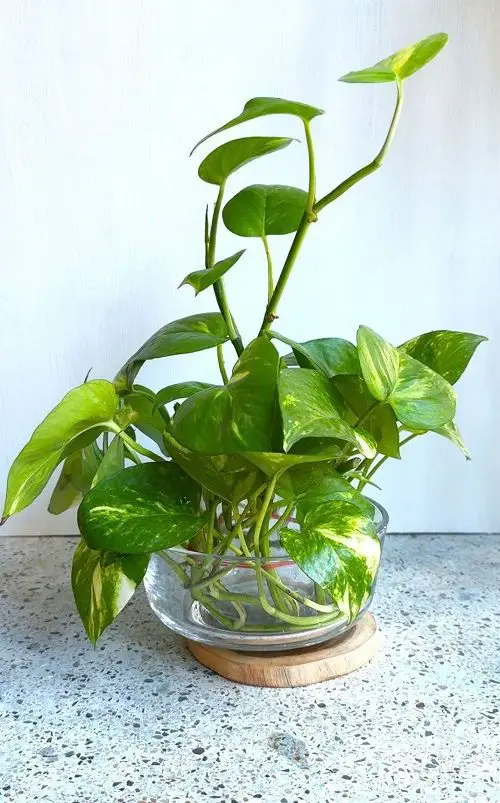
You read the last point and thought that since leaves produce energy for rooting, you’ll choose a single cutting with a bunch of foliage. This is a blunder! Leaves transpire and need nutrition, which is derived from the soil or water through the roots.
During transpiration, the leaves lose water, and since the root system of a cutting is underdeveloped, it will not be able to compensate for the loss rate. Additionally, a lack of nutrients can cause the leaf or the entire plant to die.
Basically, if there are too many leaves, the cutting dries out faster and may die. Stick to 2-3 healthy leaves on each cutting, and remove the rest.
9. Transplanting to Poor Soil
These issues arise after the development of roots. When transplanting your young pothos vine, pay extra attention to the potting mix. A compact, soggy, or arid mix is not suitable and will kill the plant.
Use a well-draining, slightly moist mix. Pothos loves high humidity but hates sitting in waterlogged soil. You can make your own mix by combining regular potting soil, perlite, and coco peat in a 2:1:1 ratio.
Note: It’s normal for your pothos to droop a bit after transplanting. This is transplant shock. Give it time, keep the soil lightly moist, and avoid direct sun until it recovers.
10. Slow and Steady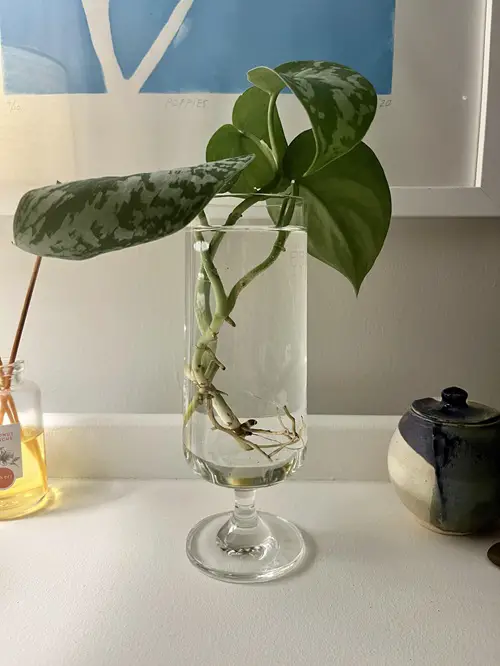
They naturally take 2-6 weeks for rooting, and if you stress your plant by constantly changing its growing conditions, it may succumb to the stress.
Also, pothos tends to root faster in spring or summer. It is best to avoid trying to propagate the plant in winter entirely.
Do not use fertilizers, change their location, or water too often to force them to grow when the plant is establishing itself. Constantly pulling out and placing the cuttings in the water will also put unnecessary stress on them.
Pro Tip: If you want faster results, try dipping the cut end of the cutting into rooting hormone powder or natural alternatives like aloe vera gel or honey before placing it in water.
With the right steps, your pothos cuttings should start growing roots and become new plants. Don’t give up; sometimes they just need a little time and care!


